Hydrangea "Diamantino": description, recommendations for cultivation and reproduction
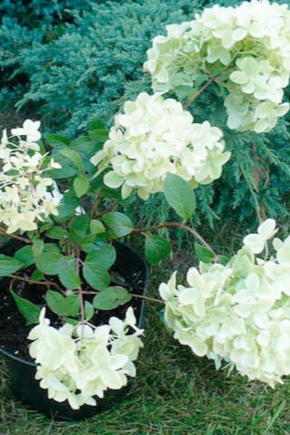
The Diamantino variety is considered one of the lushly flowering types of hydrangea. This is a wonderful shrub that has its own growth characteristics, and the secrets of care associated with it. Knowing them, you can achieve the rapid development of the plant and its luxurious decorative appearance during the flowering period.
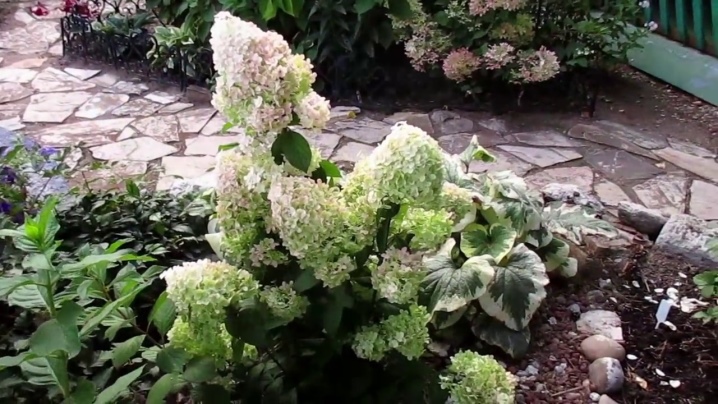
Characteristic
Hydrangea "Diamantino" is a popular ornamental variety of hydrangeas, and also one of the largest among other members of the species. With proper care, it can grow up to 2 m, although it usually reaches a height of about 1.2-1.5 m, with a width of 1-1.2 m. During flowering, the plant looks especially lush due to the many inflorescences, and its foliage is almost invisible. The description of the variety includes the following features:
- the shape of the aerial part is most often rounded, but not spherical, but slightly elongated upward;
- the branches are straight and strong, thanks to their strength, the bush retains its beautiful shape; they acquire hardness due to lignification at the age of 2 years;
- leaves rough to the touch with a bright green outer and silvery-green inner side have a wide oval shape with a slightly pointed end;
- large inflorescences in the form of panicles are dense caps of different colors, their size is 20-25 cm;
- a feature of the shrub is the change in the color of the petals during the season; when blooming, it is a yellowish-golden hue, in the middle of the flowering period, the flowers turn white, and before flowering they turn pink.


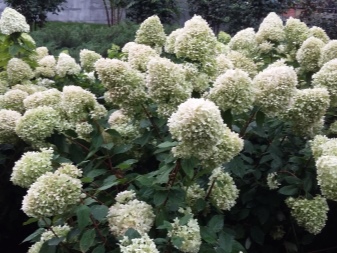
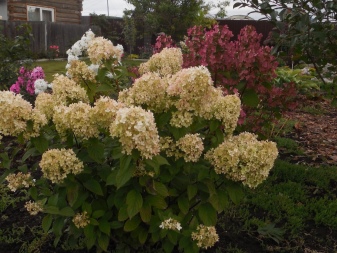
Panicle hydrangea blooms from June to September, including on young bushes planted 2-3 years ago. Vegetation in this variety is activated quite early. At the end of September, fruits are formed from the inflorescences - tiny capsules with seeds no more than 3 mm long. For the winter, this variety should be covered, since the plant has a low winter hardiness. Like other varieties, "Diamantino" loves a sunny color, and this fact must be taken into account when planting.

Landing
The subtleties of planting are associated with the competent choice of a place for hydrangea. It is necessary to place it on the site so that the plant is illuminated in the morning and evening. Then you can count on rapid growth and subsequent lush flowering. The best soil for paniculate varieties is loam with high acidity, but it is not recommended to dilute the soil with chalk or slaked lime - for this they use the top layer of earth from under coniferous species and sour, high-moor peat. The substrate for the root system is prepared from clay, sand and peat mixture, and pebbles, expanded clay or fine gravel are placed on the bottom of the hole.
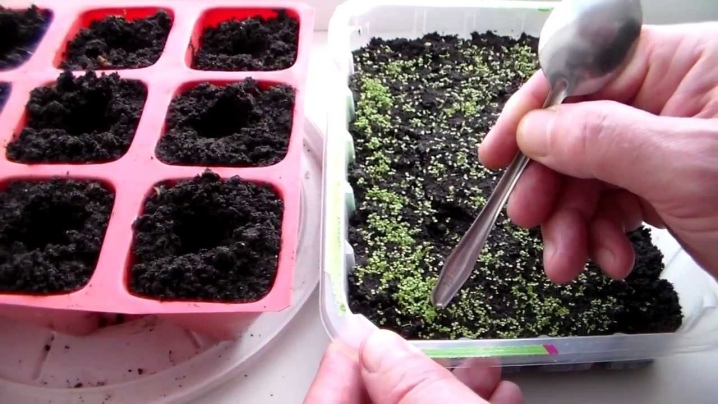
Depending on the region, the planting of the shrub can be carried out at different times. In the more southern regions, it is planted in the fall, in places with a cold climate, it is more reasonable to plant it in the spring - after the onset of stable warm days and with warmed-up soil. Throughout the summer, container seedlings are planted, the roots of which are closed. When choosing a plant, they pay attention to the integrity of the buds, bark, and freshness of the foliage.
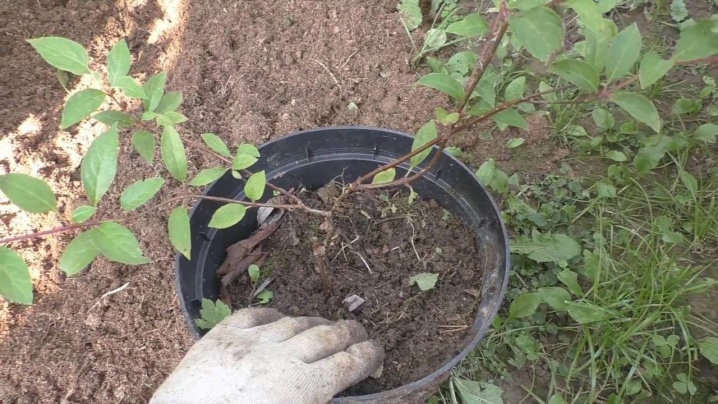
The disembarkation algorithm is as follows:
- a hole with a size of 50x50 cm is being prepared;
- long shoots of the root are cut off, when they dry, they are immersed in a biostimulant solution for 24 hours or kept in a clay chatterbox;
- nutrient soil is poured into the hole with a slide and a plant is placed on top;
- gradually pouring in the earth, it is simultaneously compacted, and the root collar is placed on the surface;
- the planted bush is watered, and the space under it is 5 cm thick, covered with humus.
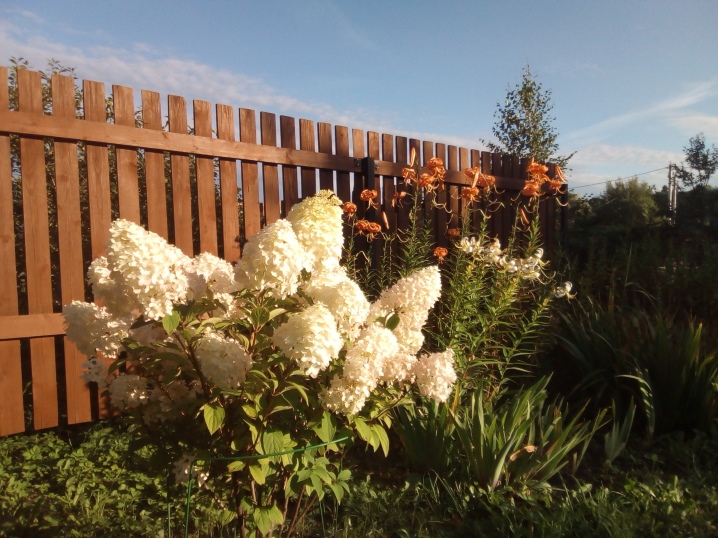
To preserve soil moisture, it is allowed to pour a moisture-absorbing hydrogel into the well before planting, which will maintain the water level and prevent the soil from drying out. Hydrangea can discard the buds the next year after planting, but for better survival, they must be removed.
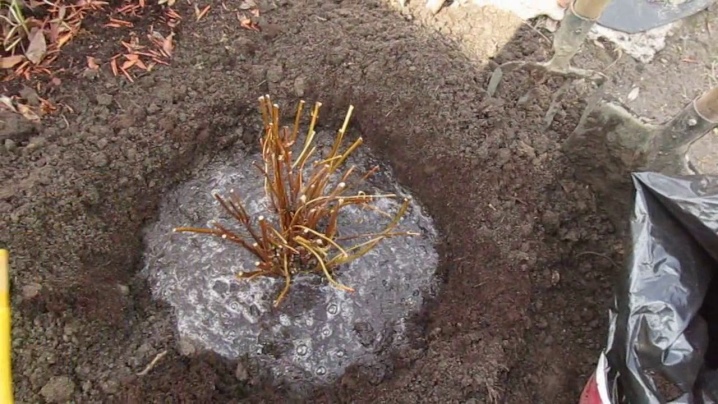
Follow-up care
Young and adult plants need careful treatment and regular care, so all the necessary procedures must be carried out in a timely manner.

Watering
Hydrangea "Diamantino" does not tolerate drought, and with prolonged water shortage, its flowers become small. For outdoor irrigation, rainwater is used. Saplings need at least a bucket of water; an adult bush takes more than 30 liters. They irrigate the ground near the trunk 2 times a week, spilling water under the root. Loosening and hilling is carried out with the same frequency as irrigation.
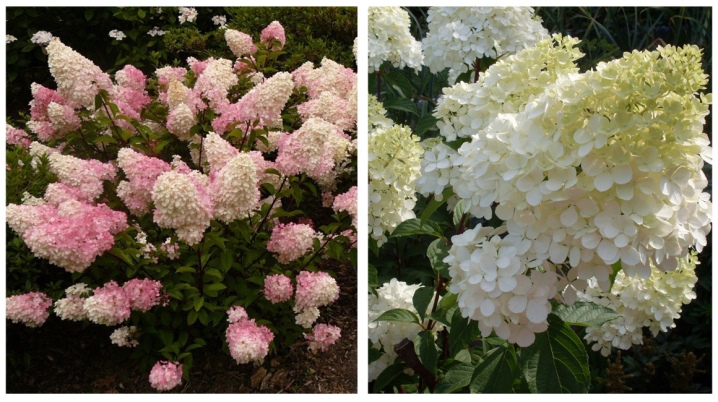
Top dressing
Young bushes do not need fertilization throughout the year, but then you need to feed them three times per season, namely:
- when new branches appear, the soil is fertilized with products containing several mineral additives;
- at the beginning of summer, when buds appear, fertilizing with potassium, phosphorus, iron and other elements is needed; the universal preparation "Superphosphate" is ideal for this;
- towards the end of summer, the shrub needs organic matter, therefore, manure infused in water for 20 days is used; before use, the composition is diluted in water (1: 10 l).
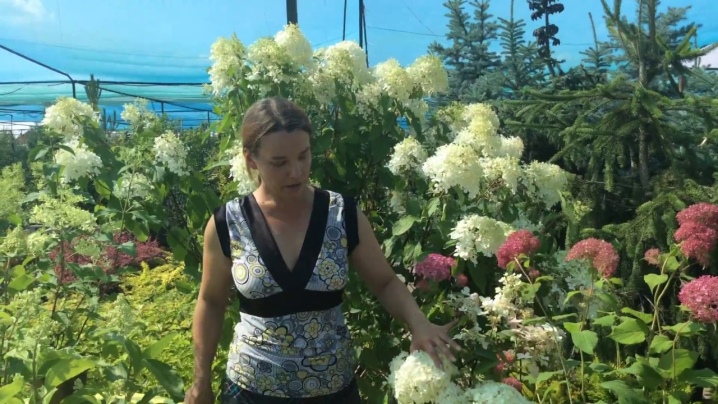
Important! For any plant, including hydrangeas, it is better not to feed it than to overdo it. Do not forget that abnormally large panicles can greatly burden the branches of the bush.
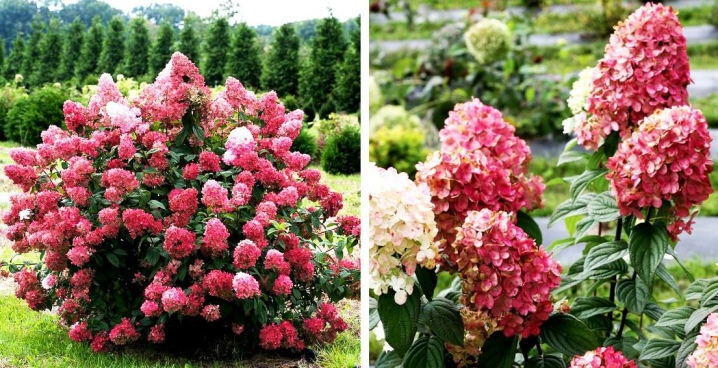
Pruning
The flowering of the culture, as well as the size of the shrub, largely depends on pruning. It is better to carry it out before the formation of buds, in early spring. Shoots are shortened by 2-3 buds, frozen, weak and twisted branches are removed. In summer, a haircut involves cutting 3-5 buds. The rejuvenation of the bush is carried out annually by cutting off one skeletal branch of the hydrangea.
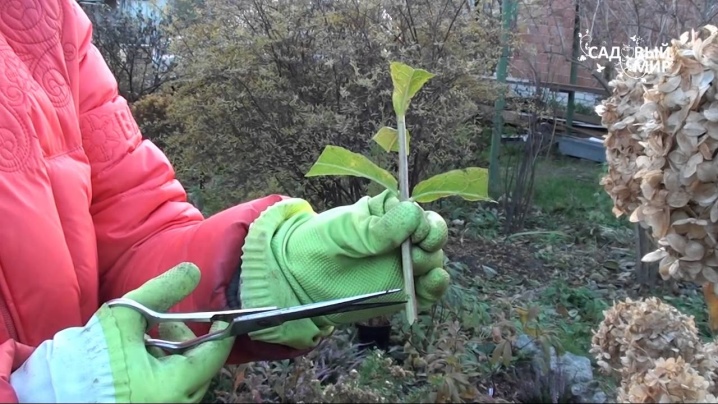
Fight disease
Diseases of culture result from illiterate care of shrubs. However, it is impossible to guarantee the complete absence of problems, you need to be prepared for them. The main diseases of hydrangea are gray, white rot and powdery mildew. You can cure the bush using fungicidal agents - "Topaz", "Chistotsvet", "Fitosporin-B", with a small lesion - soap solution. Among the pests that pose a danger are aphids, nematodes, snails and slugs, spider mites. If insects appear, you can get rid of them with the help of suitable insecticides. For prevention, soil treatment with copper sulfate, Bordeaux mixture is used, weeds are promptly eliminated.
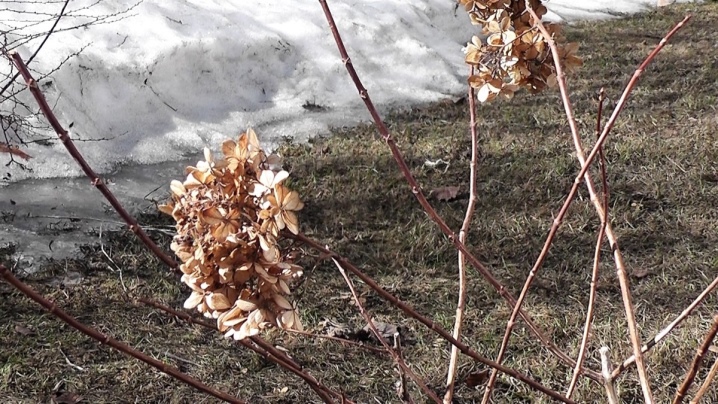
Preparing for winter
In anticipation of winter, a radical pruning of fresh hydrangea shoots is carried out to 5 buds. Then the near-stem circle of the plant is mulched with a thick layer of sawdust, needles and peat (30 cm). Some gardeners, when tying hydrangea branches, bend them down, but this can cause them to break. Therefore, it is better to install a frame of several pegs, fix coniferous spruce branches to them, and pull a lutrasil cloth or spunbond on top for protection. During the first wintering, the bushes must be well covered in order to protect them from wind and frost. At the same time, the plant should not be allowed to grow, therefore, the film is not used, and the burlap is used with caution, leaving small gaps.

Reproduction
You can grow a panicle hydrangea from seeds, but only in order to to plant it in a permanent place, it will take at least 2 years of preparation of the planting material, including its hardening and growing in greenhouse conditions... This is not very convenient, moreover, with this method it always comes out to get a plant identical to the one from which the seeds were taken.
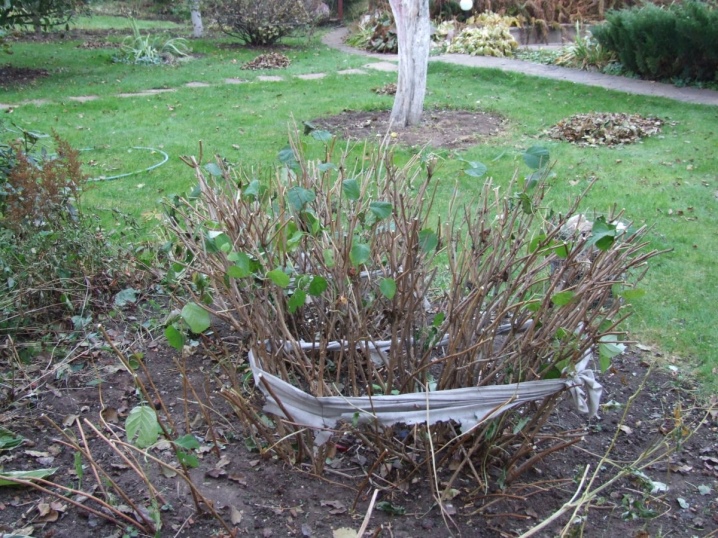
Therefore, gardeners use lighter breeding methods.
- Rooting of air layers, which are taken as young one-year-old branches. They are laid in a small groove and covered with soil, fastened to the ground. It is important that a part of the shoot 15–20 cm in size remains above the surface. The new plant is separated from the mother after complete rooting. As a rule, this happens next year, in the spring.
- In spring and until mid-July, hydrangea can be planted with cuttings. Twigs 10-15 cm long should be cut at the top of the shrub. Before planting in the substrate, the lower part of the cuttings is cleaned of leaves and soaked in a solution of a growth stimulant for roots. Until next spring, the seedling is placed in greenhouse conditions, where constant care is needed for it - watering, airing, careful loosening of the soil.
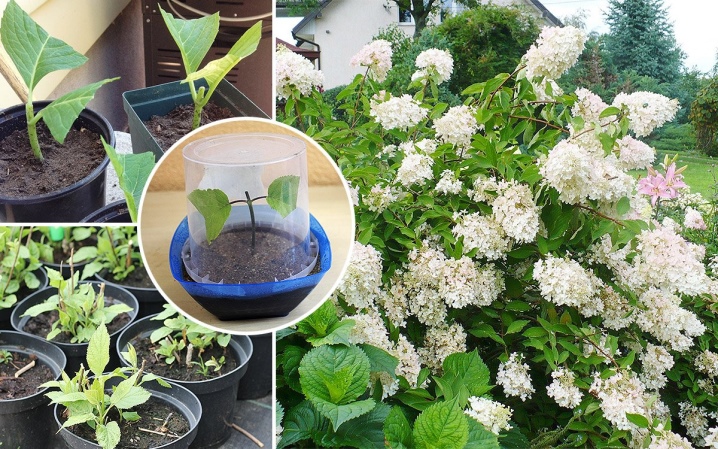
Important! By dividing the bush, the hydrangea is propagated only during transplantation. The procedure is carried out in March-April or autumn. This requires completely digging the plant out of the ground. After that, the plant is divided into 2-3 parts with a sharp shovel.

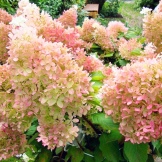
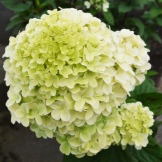

Beautiful examples in landscape design
Shrub "Diamantino" can be used in group planting and as a single decorative element - tapeworm, namely:
- a common design solution is an elegant bush in the middle of a green lawn;
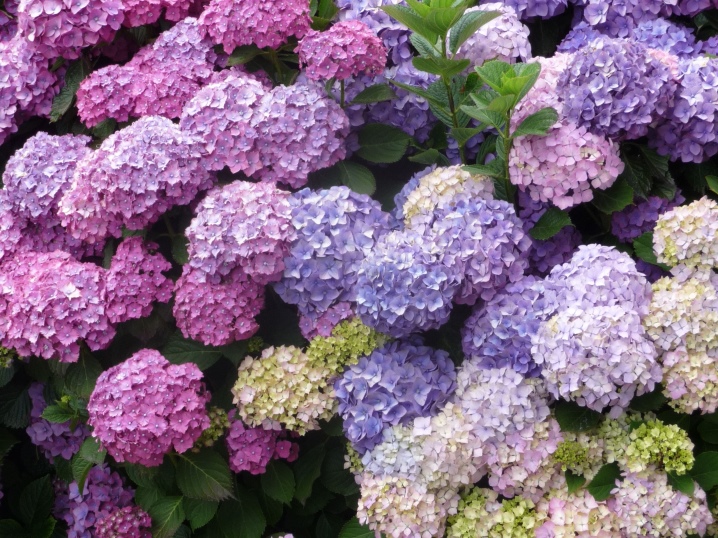
- hedges and alleys;
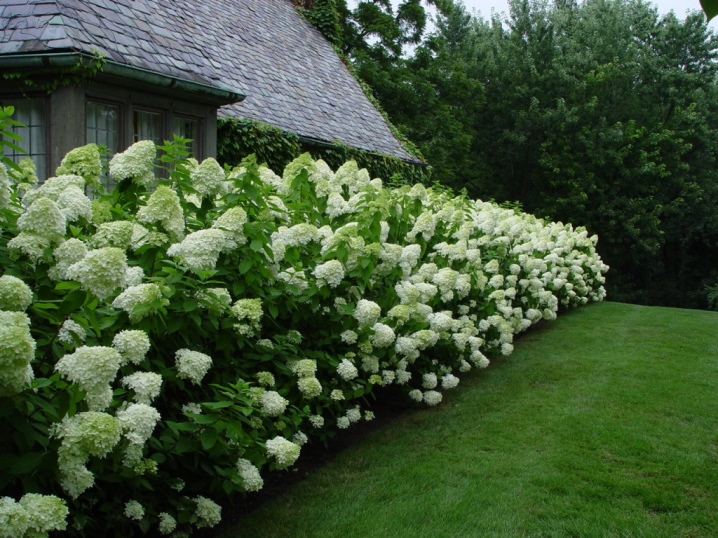
- application in an ensemble with deciduous trees such as maple, birch, willow;

- the variety looks good paired with lilacs, berry bushes;
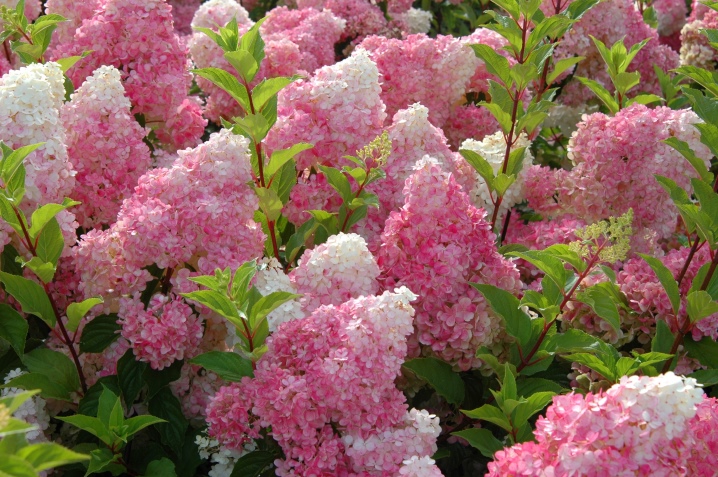
- often the plant is planted in combination with coniferous tree and shrub species;

A good option is a combination with large-flowered crops - roses, dahlias, irises and peonies.
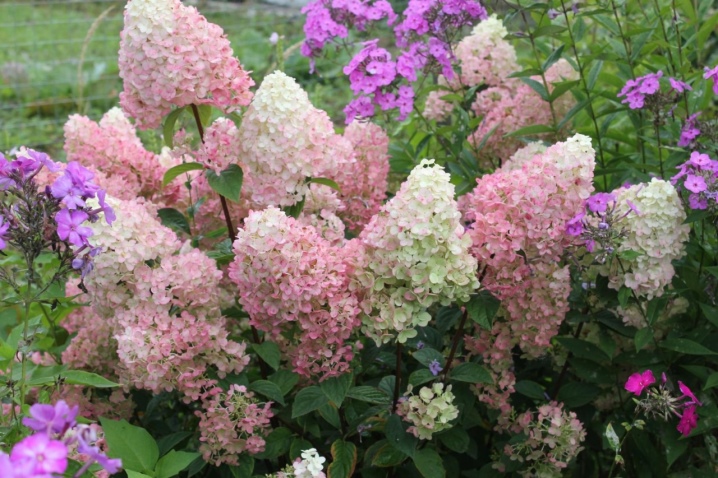
You can learn more about the Diamantino hydrangea variety from the video below.



































































The comment was sent successfully.